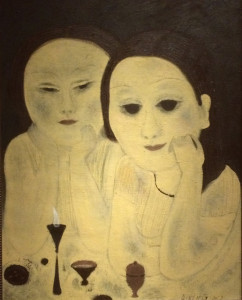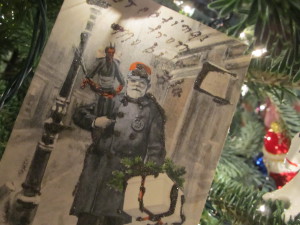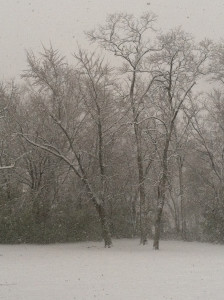Last night, with the Eve of St. Nicholas, we celebrated the first of the gift bearers, and tonight, Hanukkah begins. It is a moveable festival in the Jewish calendar, a festival of lights, this year the first of many nights where light is celebrated. And this is no surprise in this time of darkness, for we are fast on the approach to Midwinter: the longest night of the year. Light is what we seek.
Hanukkah commemorates an historical event in ancient Jerusalem in which a small flask of oil kept the lamp of the Temple burning for eight days and nights, much longer than it ever should have, long enough for a new supply of oil to be attained at a time when the prospect of attaining that oil looked bleak. This miracle of the oil is commemorated with each Hanukkah celebration through the lighting of the menorah, a candelabra of nine candles: one central candle and eight others, one for each of those eight nights.
Just as the oil of the temple lamp is central to Hanukkah, so is oil in the traditional foods of the holiday. Much of it is fried in hot oil. The most famous (and the ones that would get me to the table faster than anyone) are potato latkes and jelly doughnuts. The latkes are pancakes made from shredded potatoes, served with apple sauce and a dollop of sour cream. And any celebration that involves homemade doughnuts of any kind, be they jelly or plain or cinnamon, is no small cause for joy.
Our neighbor Old Aunt Sarah, who has been here in Lake Worth longer than anyone, doesn’t do much cooking these days, but some years, if the mood strikes her, she does make latkes for Hanukkah. Old Aunt Sarah’s latkes were the first I ever tasted. When she makes them, she makes them in large batches, and sends some over to Seth and me. We don’t see her often, but when we do, it is always a joy and a wonder, like the time she strolled over and peered over the garden fence and her gray eyes lit up when she saw the nasturtiums we were growing. “Nasturtiums!” she said, as she gazed upon those peppery blooms. She seemed transported. “I don’t think I’ve said that word since I was a child.”
It also happens to be, tonight, the Second Sunday of Advent, when we light two purple candles on our Advent wreath. Again, light increasing, for last week we had only one candle lit on our approach to Christmas, so tonight, that light is doubled. Old Aunt Sarah’s childlike wonder is central to Advent and to Hanukkah. We bring light, ever increasing light, to a dark time. Old Aunt Sarah and we wish you that wonder. We, collectively––Aunt Sarah, you, me––we are the light bearers. It is up to each of us.
Image: “Candlelight,” a painting by Philippe Brouillard, 2015. [Public domain] via Wikimedia Commons.


